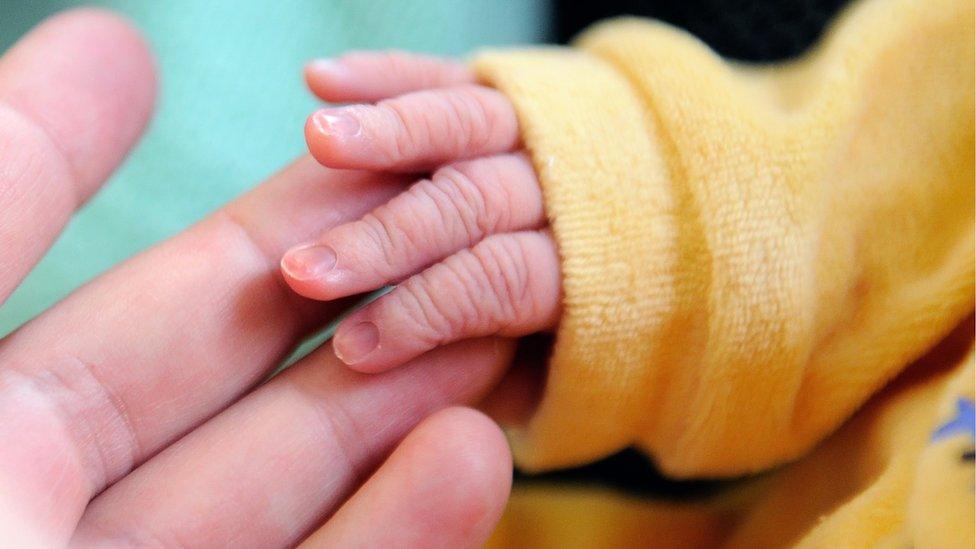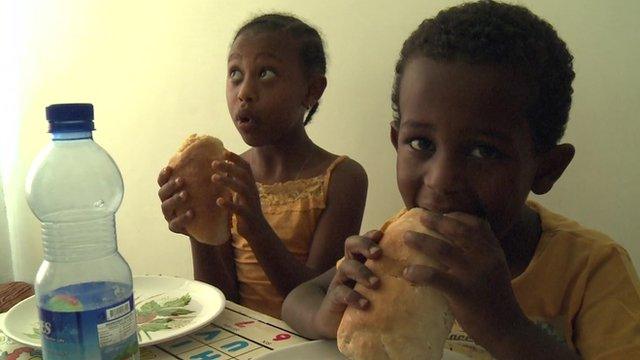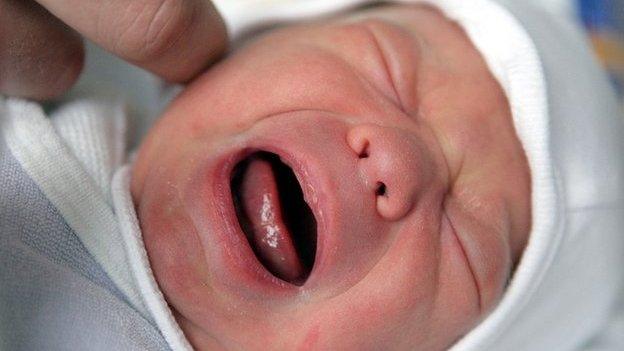Italy set to double child benefit to combat low birth rate
- Published

There were fewer births in Italy in 2015 than in any year since the modern state was founded in 1861
Italy's health minister has outlined plans to double child benefit to combat what she described as an "apocalyptic" decline in the country's birth rate.
Beatrice Lorenzin said the monthly bonus for lower income families should be twice the current €80 (£60; $90).
Ms Lorenzin also called for higher payments for second and subsequent children to encourage big families.
Just 488,000 babies were born in Italy in 2015, fewer than in any year since the modern state was founded in 1861.
Speaking to Italy's La Repubblica newspaper, Ms Lorenzin said: "If we carry on as we are and fail to reverse the trend, there will be fewer than 350,000 births a year in 10 years' time, 40% less than in 2010 - an apocalypse."
She added: "In five years we have lost more than 66,000 births (per year)... If we link this to the increasing number of old and chronically ill people, we have a picture of a moribund country."
The benefit payments, which were introduced last year, are available for babies born between 1 January 2015 and 31 December 2017 and payable up to their third birthdays.
Ms Lorenzin, an influential member of Prime Minister Matteo Renzi's government, wants to make the payments available to all under-threes.
But the changes would add an estimated €2.2 billion to public spending over six years - likely to cause consternation in a country under pressure from the EU to cut spending and reduce its debt.
Italy has one of the lowest birth rates in Europe.
According to data collected by the World Bank, its 2014 birth rate was just 8 per 1,000 people, compared with 12 for the UK and 13 for the US.
Italian women give birth to 1.39 children on average, compared with an EU average of 1.58.
- Published28 January 2016

- Published6 November 2015

- Published29 May 2015

- Published17 December 2015